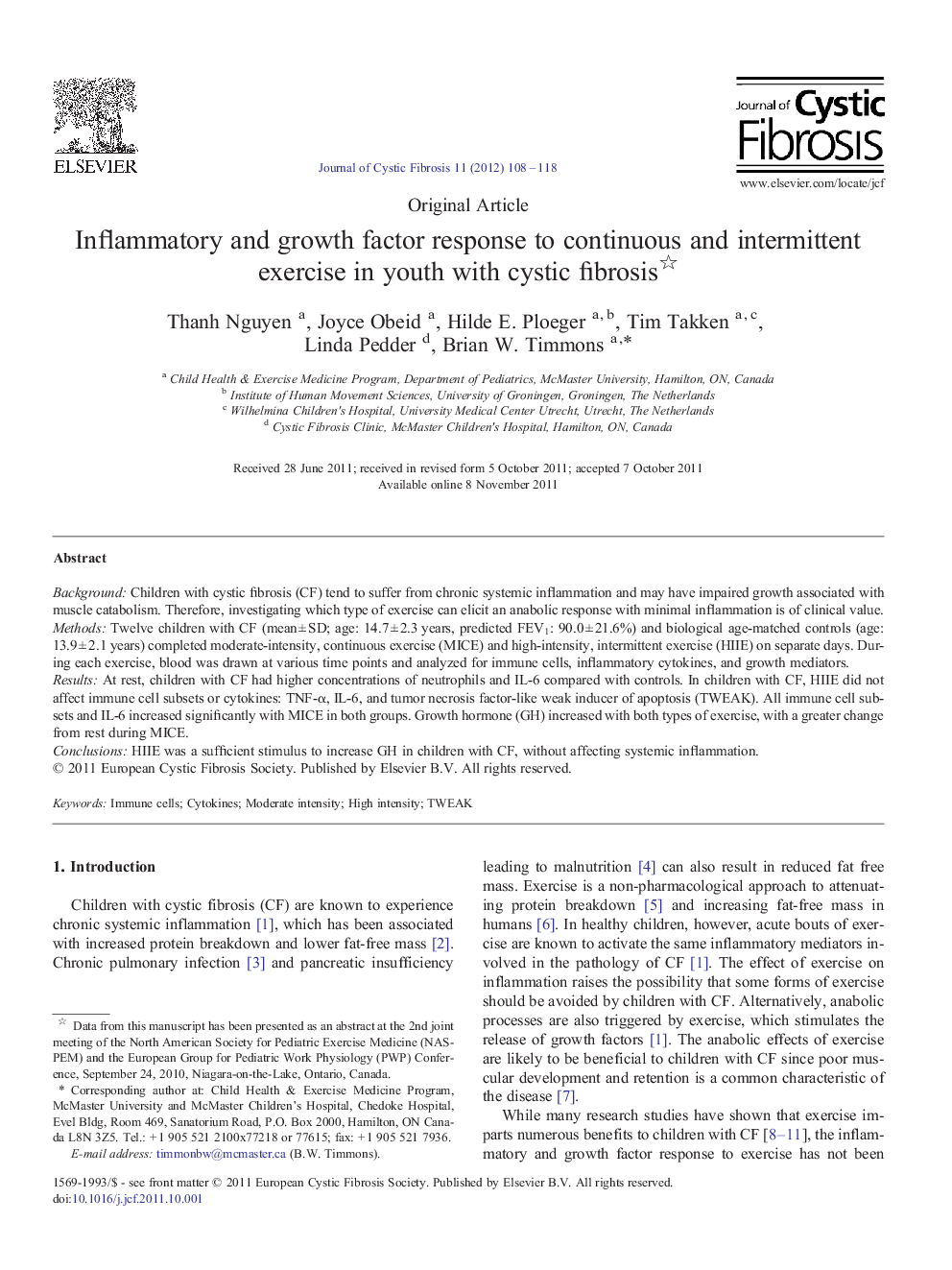| Article ID | Journal | Published Year | Pages | File Type |
|---|---|---|---|---|
| 4208383 | Journal of Cystic Fibrosis | 2012 | 11 Pages |
BackgroundChildren with cystic fibrosis (CF) tend to suffer from chronic systemic inflammation and may have impaired growth associated with muscle catabolism. Therefore, investigating which type of exercise can elicit an anabolic response with minimal inflammation is of clinical value.MethodsTwelve children with CF (mean ± SD; age: 14.7 ± 2.3 years, predicted FEV1: 90.0 ± 21.6%) and biological age-matched controls (age: 13.9 ± 2.1 years) completed moderate-intensity, continuous exercise (MICE) and high-intensity, intermittent exercise (HIIE) on separate days. During each exercise, blood was drawn at various time points and analyzed for immune cells, inflammatory cytokines, and growth mediators.ResultsAt rest, children with CF had higher concentrations of neutrophils and IL-6 compared with controls. In children with CF, HIIE did not affect immune cell subsets or cytokines: TNF-α, IL-6, and tumor necrosis factor-like weak inducer of apoptosis (TWEAK). All immune cell subsets and IL-6 increased significantly with MICE in both groups. Growth hormone (GH) increased with both types of exercise, with a greater change from rest during MICE.ConclusionsHIIE was a sufficient stimulus to increase GH in children with CF, without affecting systemic inflammation.
